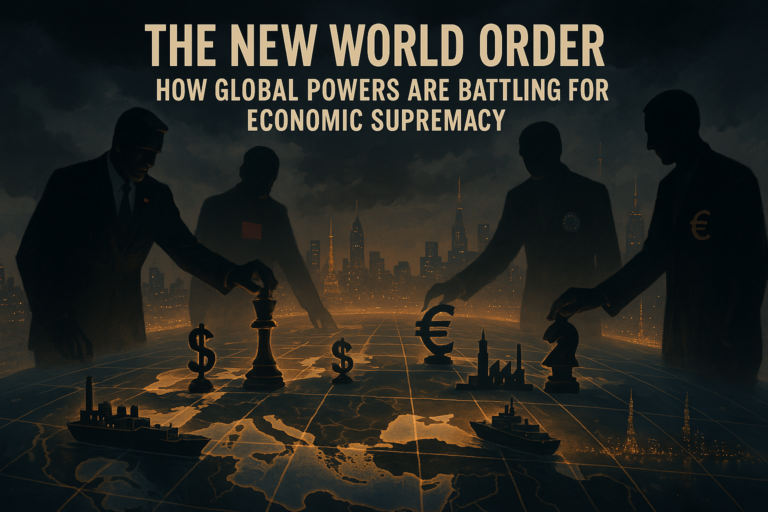A Tectonic Economic Shift Is Underway
The global economic landscape is undergoing a once-in-a-century realignment. For decades, the United States and its allies dominated the world economy. But now, new power centers are rising—and fast.
According to PwC’s The World in 2050 report, by mid-century, the top three economies by purchasing power parity (PPP) will be China, India, and the United States. Other emerging markets like Indonesia, Brazil, and Mexico are also expected to enter the top 10, pushing out some long-standing Western powers such as France and Italy.
In 2024, the International Monetary Fund (IMF) and thez World Bank echoed similar projections, pointing to rapid digital adoption, infrastructure growth, and favorable demographics as drivers of emerging market acceleration.
BRICS+ vs. G7: A New Power Bloc Emerges
Perhaps the clearest sign of this transformation is the ascent of BRICS+ (Brazil, Russia, India, China, South Africa, and new members like Saudi Arabia, Egypt, and Iran). As of 2024, this expanded bloc contributes 36% of global GDP, overtaking the G7’s 30%, according to Bloomberg.
At the BRICS summit in Johannesburg in 2023, discussions about launching a shared currency gained traction. Though no single currency has yet emerged, the intent to de-dollarize global trade is evident—especially among countries facing Western sanctions.
The Silicon Cold War: Tech as the New Battleground
Beyond GDP, the true battle lies in technological supremacy. The U.S. and China are entrenched in a high-stakes rivalry across multiple fronts:
- Semiconductors: The U.S. has restricted exports of advanced chips to China, while Beijing invests billions to develop its domestic industry.
- Artificial Intelligence: Both nations lead in AI R&D, with China surging ahead in government adoption and surveillance systems.
- 5G and 6G: Huawei, once blacklisted in the West, continues to dominate in emerging markets, while U.S. firms play catch-up.
This “Silicon Cold War” is as much about ideology as it is about economics. Whoever leads in tech will likely dictate the rules of the future digital economy.
Green Power and Rare Earth Control
Another front in this power shift is the green energy transition. China is the world’s largest producer of solar panels, wind turbines, and electric vehicles. It also dominates the refining of rare earth elements essential to clean tech and military hardware.
The U.S. and EU are responding with ambitious green investment plans and new mining initiatives, but they face time and environmental constraints.
According to the International Energy Agency (IEA), demand for rare earths could quadruple by 2040, intensifying geopolitical competition.
Supply Chains Redrawn by Strategy
The COVID-19 pandemic and the Ukraine war revealed vulnerabilities in global supply chains. In response, Western firms are reshoring production or “friend-shoring” to allies. Countries like Vietnam, India, and Mexico are gaining traction as alternative manufacturing hubs.
Tech giants such as Apple and Intel have shifted parts of their operations out of China. Meanwhile, the U.S. CHIPS Act aims to bring semiconductor fabrication back to American soil.
Currency Wars and De-Dollarization
Global financial systems are also in flux. The U.S. dollar still dominates, used in 88% of foreign exchange trades. But there are cracks in the system.
- China has launched the digital yuan, already in pilot use across several cities.
- Over 130 countries are exploring Central Bank Digital Currencies (CBDCs), according to the Atlantic Council.
- BRICS+ leaders are actively discussing alternatives to the SWIFT banking system, particularly in trade with sanctioned nations.
These efforts may not dethrone the dollar overnight, but they signal an era of fragmented financial systems.
What Happens Next?
This economic power shift will reshape not only trade and finance, but also influence, governance, and global norms. Businesses, investors, and nations must navigate a multipolar world where no single country leads unchallenged.
What emerges may not be a Cold War-style binary world, but rather a networked competition of spheres: economic, digital, environmental, and ideological.
One thing is clear—the rules of the 20th-century world order are no longer binding. A new playbook is being written. And every nation is vying for a pen.


